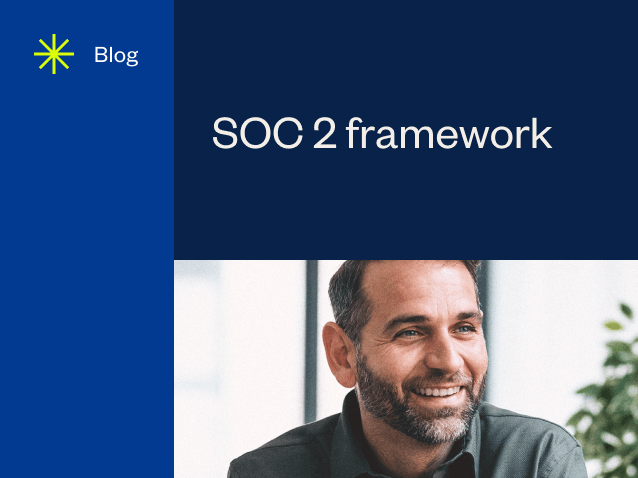SOC 2 Framework: What You Need to Know

The SOC 2 framework is an essential and rigorous evaluation process for organizations that provide third-party services to others. It is designed to ensure the highest level of trust and transparency when it comes to the security, availability, processing integrity, confidentiality, and privacy of the systems, applications, and data belonging to their customers and users. The framework was introduced by the American Institute of Certified Public Accountants (AICPA) as part of their System and Organization Control reporting platform.
One of the goals in following the SOC 2 framework is to achieve SOC 2 compliance. Achieving compliance means that a service organization has met all necessary criteria pertaining to one or more of the five Trust Services Criteria (TSC): Security, Availability, Processing Integrity, Confidentiality, and Privacy. Ensuring SOC 2 compliance is vital for organizations that handle sensitive customer data in industries such as finance, cloud computing, healthcare, or technology services since these businesses are obligated to demonstrate they have specific safeguards in place.
To determine if a company meets all requirements for SOC 2, a thorough analysis is performed via a SOC 2 audit. A SOC 2 audit must be conducted by an independent certified public accountant or auditing firm with knowledge and expertise in this field. The primary goal of this audit is to evaluate an organization’s internal controls for managing and protecting customer data. This includes assessing policies and procedures related to access control, physical security measures, data backups and recovery processes, system monitoring tools, encryption technologies used for protecting confidential information, personnel training programs on security awareness and many other additional factors depending on the scope of TSCs being evaluated.
SOC 2 framework Trust Services Criteria
Understanding SOC 2 requirements is an essential first step of achieving compliance. These requirements are based on five Trust Services Criteria created by the AICPA:
1. Security: This criterion evaluates whether an organization’s systems and applications are protected against unauthorized access (both physical and logical) and other vulnerabilities, ensuring protection and integrity of client data and information.
2. Availability: This criterion verifies that services provided by an organization are available for operation according to agreed-upon terms, ensuring reliability and sustainability.
3. Processing Integrity: This criterion assesses the accuracy, timeliness, and completeness of system processing as well as the authorization of transactions to ensure data is processed as intended.
4. Confidentiality: This criterion ensures that sensitive customer information is properly stored, classified, protected, and accessed only by authorized personnel to maintain confidentiality.
5. Privacy: This criterion involves the collection, storage, retention, disclosure, disposal of personal information in adherence with privacy policies and any applicable laws or regulations.
Why SOC 2 matters
To have a more comprehensive grasp on SOC 2 definition, it is essential to understand its purpose and significance for organizations providing services to users and customers. The framework offers a standardized way for such organizations to demonstrate their commitment towards maintaining robust security controls over confidential user and customer data. It helps instill trust among clients who rely on these service providers for critical business operations while also promoting an ongoing culture of compliance within the organization itself.
One useful tool for entities embarking on their journey towards SOC 2 compliance is the SOC 2 questionnaire. A questionnaire serves as a valuable resource for self-assessment and an opportunity to communicate with auditors about specific controls in place at the organization. The questionnaire typically consists of detailed questions related to each TSC and assists with providing relevant examples evidence supporting those answers. This document aids in streamlining the audit process and identifying potential gaps in controls or areas requiring improvement.
In conclusion, adopting the SOC 2 framework signifies an organization’s commitment to maintaining robust security measures surrounding customer data. By understanding all aspects related to SOC 2 compliance – from audit processes through requirements based on Trust Services Criteria – businesses can effectively navigate their path towards achieving this critical attestation. Utilizing tools like questionnaires can also help ease some complexities associated with audits and provide valuable insight into an organization’s readiness for obtaining compliance status.
As industries continuously evolve and place increasing importance on protecting sensitive customer information against various threats – both internal and external – adhering to stringent compliance frameworks like SOC 2 becomes an essential business practice for service providers. In the end, it not only helps strengthen customer trust but also ensures long-term success in competitive markets.
How to get started
A great first step is to assess your readiness with our SOC 2 checklist. A-LIGN offers a variety of services, including SOC 2 automation through the use of our A-SCEND platform. Contact A-LIGN today to start the conversation about how we can streamline your compliance journey.





